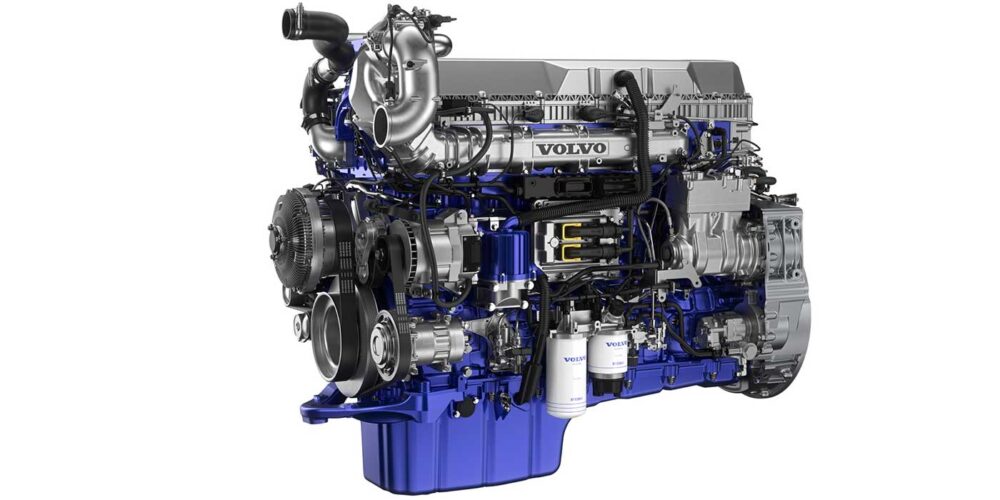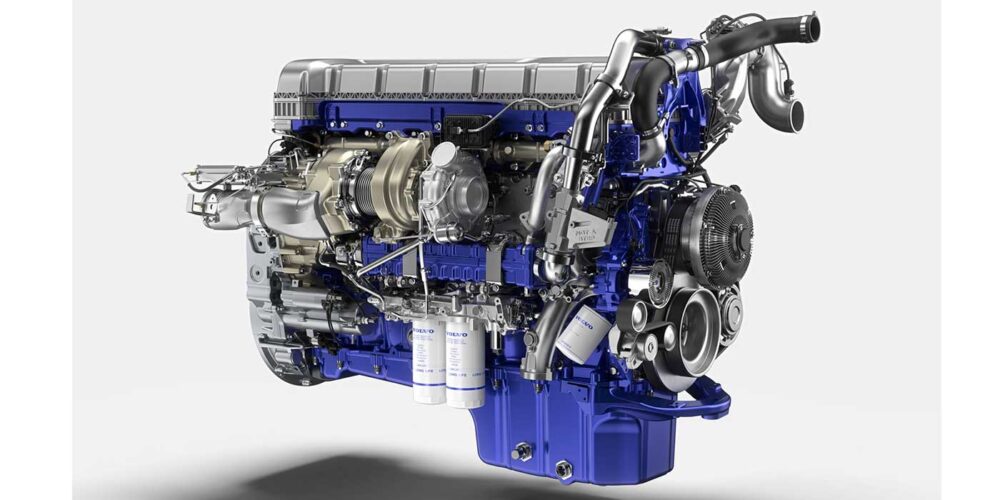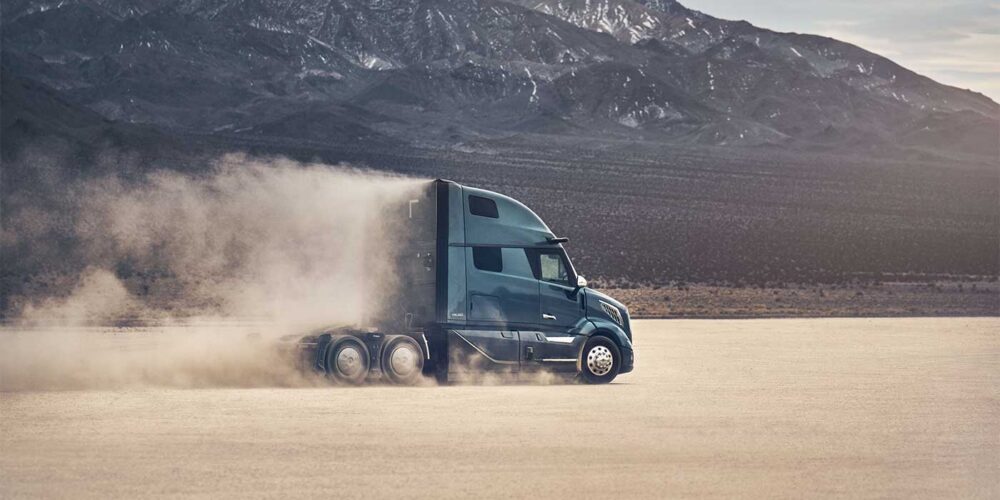Volvo has detailed the enhancements to its D13 engine and I-Shift transmission that will be available in its upcoming new VNL. Design changes to the D13 engine include a new seven-wave piston with a shorter piston height, longer connecting rod, smaller injector needle control valves, a variable vane oil pump and improvements to the turbo compounding (TC) unit and turbocharger. Volvo also tells us its engineers introduced enhancements that improve I-Shift transmission shift speeds by 30%.
“Bringing the all-new Volvo VNL to the market has been seven years in the making,” said Peter Voorhoeve, president of Volvo Trucks North America. “As we’ve said, this is not just a face lift, it’s a 90% redesign of the product and the platform for all future powertrain solutions. A 10% fuel efficiency increase is the result of radically improved aerodynamics and a dedication to improving upon our already class-leading powertrain offering.”
Voorhoeve also elaborated on the role ICE truck efficiency plays in carbon reduction efforts, saying “a 10% savings in a nearly 300,000 Class 8 truck market would equate to the same carbon reductions delivered by 30,000 battery-electric Class 8 trucks. Efficiency gains in our all-new Volvo VNL are crucial to our three-pillar strategy for decarbonizing heavy-duty transportation.”

Combustion improvements
Smaller needle control valves in the fuel injectors provide improved fuel flow into the D13 engine’s combustion chamber, according to Volvo, allowing for more precise and rapid fuel flow control improving atomization, combustion efficiency and enhancing engine performance. Volvo also says it has improved on its six-wave piston design, with the seven-wave piston. Volvo claims it provides further directional control of the air and fuel mixture to create even more efficient combustion. Additionally, the new engine has decreased piston height and paired them with a longer connecting rod, which the company says will minimize cylinder sidewall pressure, decrease friction and improving overall performance.
Turbo improvements
To minimize heat loss and increase efficiency, Volvo says complete insulation was added to both the turbocharger and the TC unit. Internal refinements include a smaller compressor and turbine wheel, which Volvo claims will allow the system to recover surplus energy more effectively, converting it into usable power.
“While our previous generation D13, particularly the D13TC engine, performed extremely well, our dedicated team of engineers were able to seek out and successfully implement changes to make it even more reliable and efficient than ever before,” said Duane Tegels, product marketing manager for powertrain at Volvo Trucks North America. “Where there are opportunities to make improvements, our team is focused on continuing to work towards decarbonizing our product offering.”
Variable displacement oil pump
The variable displacement oil pump which Volvo integrated into the D13 engine is meant to optimize oil pressure regulation while effectively minimizing parasitic losses. Volvo says the new pump employs adjustable vanes that dynamically adapt to the engine’s oil pressure demands, ensuring a consistent and precise delivery of oil throughout various operating conditions—preventing excess oil flow when not needed and maintaining optimal pressure when demanded, through adjustable vane angles. According to Volvo, this adaptability enhances engine efficiency by reducing the energy required to drive the pump and minimizes unnecessary strain on the engine components, resulting in improved fuel economy and reduced wear and tear over time.

I-Shift improvements
Volvo is officially marking the end of its manual transmission offerings, which it says is due to the efficiency gains and reliability achieved with the I-Shift. Now, the company says the latest iteration of the automated I-Shift transmission features up to 30% faster shifting speeds compared to its predecessor. To reach these shifting speeds, Volvo overhauled of the software, electronics, clutch mechanisms and engineering of the I-Shift. Volvo says its engineers redefined algorithms, reduced clutch throw and introduced an enhanced clutch brake system to significantly reduce transition times between gears, which the company claims will ensure seamless power delivery, amplify acceleration and minimizes energy loss during gear changes.
“Vehicle efficiency transcends mere engine performance; it encompasses the synergy between various components, where the transmission plays a pivotal role,” said Tegels. “The transmission’s ability to optimize gear shifts, reduce energy loss, and harmonize power delivery significantly influences overall vehicle efficiency, showcasing that a holistic approach beyond the engine is vital in achieving optimal performance and fuel economy.”
Learn more details about the new VNL from this Q&A with Volvo execs.














